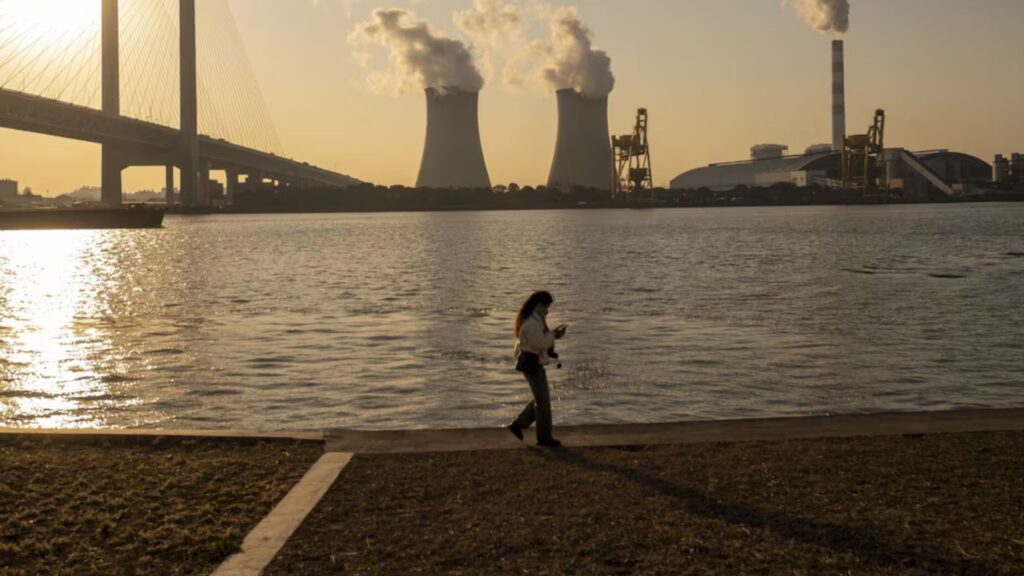China Unveils Bold Plan to Halve Coal Power Emissions by 2027 with New Technologies

- Innovative Technologies: China to pilot coal plants using green ammonia, biomass, and carbon capture.
- Emission Targets: Aiming for a 50% reduction in carbon intensity by 2027.
- Economic Strategy: Integration with renewable energy projects and financial support from institutions.
China has announced a comprehensive plan to cut carbon emissions in its coal power industry, emphasizing the use of innovative technologies such as green ammonia, biomass, and carbon capture, utilization, and storage (CCUS). The initiative aims to transform the carbon-intensive coal power sector, which remains the primary energy source in the world’s top energy consumer.
The plan, jointly issued by the National Development and Reform Commission (NDRC) and the National Energy Administration (NEA), outlines a roadmap for deploying these technologies to reduce carbon emissions by 20% by 2025 and 50% by 2027 from 2023 levels.
Innovative Technologies
China will pilot decarbonization technologies at selected coal-fired power plants. The NDRC has called on provincial governments and state-owned enterprises to nominate projects for this initiative, marking the first centralized national scheme targeting coal-fired power plants with these advanced technologies.
The NDRC’s statement, released on July 15, the first day of China’s 20th Third Plenum, highlights the importance of this political gathering focused on economic reforms. The plan includes co-firing coal with biomass and green ammonia, derived from renewable-based hydrogen, and implementing CCUS technologies. “Mixing coal with biomass and green ammonia can significantly lower emissions, though challenges remain in fuel supply and costs,” said Shen Xinyi, an analyst at the Centre for Research on Energy and Clean Air.
Emission Targets
The government has set a benchmark for the coal power sector’s carbon emissions, comparing them to natural gas-generated electricity. By 2027, the goal is for coal plants’ emissions to be on par with those of gas-fired plants. “Cutting the carbon intensity of coal plants by 50% will bring them close to the emission levels of gas-fired power plants,” the NDRC stated.
The initiative aims to enhance the utilization of renewable energy mega-projects, particularly those in China’s remote desert areas. These projects face low utilization rates due to a lack of long-distance power transmission networks. Green ammonia production can create localized demand for the surplus renewable energy, integrating with the coal power sector’s decarbonization efforts.
Economic Strategy
China’s plan encourages local authorities to support and subsidize low-carbon projects, despite analysts’ concerns about the feasibility and high costs of deploying new technologies. “Biomass power plants in China are not financially viable without subsidies,” Shen noted. Financial institutions are urged to support these pilot projects to ensure their success.
The Third Plenum’s agenda includes accelerating the deployment of decarbonization technologies in emission-intensive sectors. This aligns with President Xi Jinping’s “New Productive Forces” initiative, which advocates for using new technologies and innovation to upgrade conventional industries and drive economic growth.
Related Article: China Dominates Global Wind and Solar Energy Construction
China’s compliance emission trading scheme (ETS) also covers coal-fired power plants, setting annual targets for reducing carbon intensities. The NDRC’s announcement may signal a call for more stringent ETS targets and faster financing of decarbonization technologies. “This announcement challenges whether the environment ministry is being too lenient with ETS targets and too slow to finance frontier decarbonization technologies,” a China-based power analyst told S&P Global Commodity Insights.
China’s bold decarbonization plan for its coal power sector represents a significant step towards a greener future. By leveraging innovative technologies, setting ambitious emission targets, and integrating renewable energy projects, China aims to transform its energy landscape and reduce its substantial greenhouse gas emissions.












